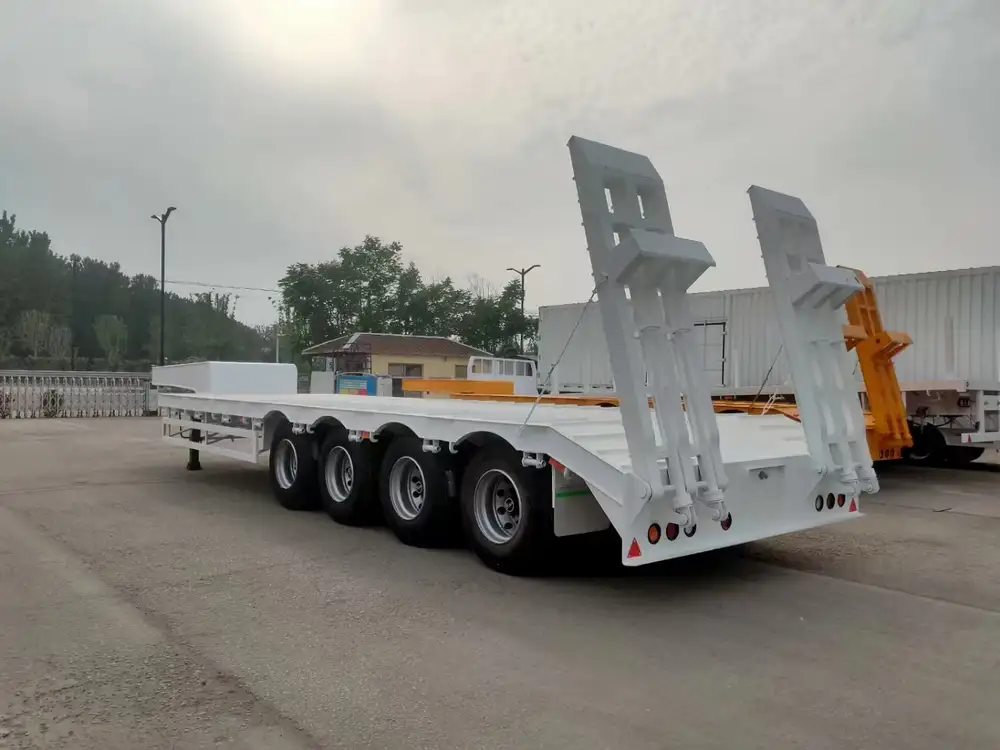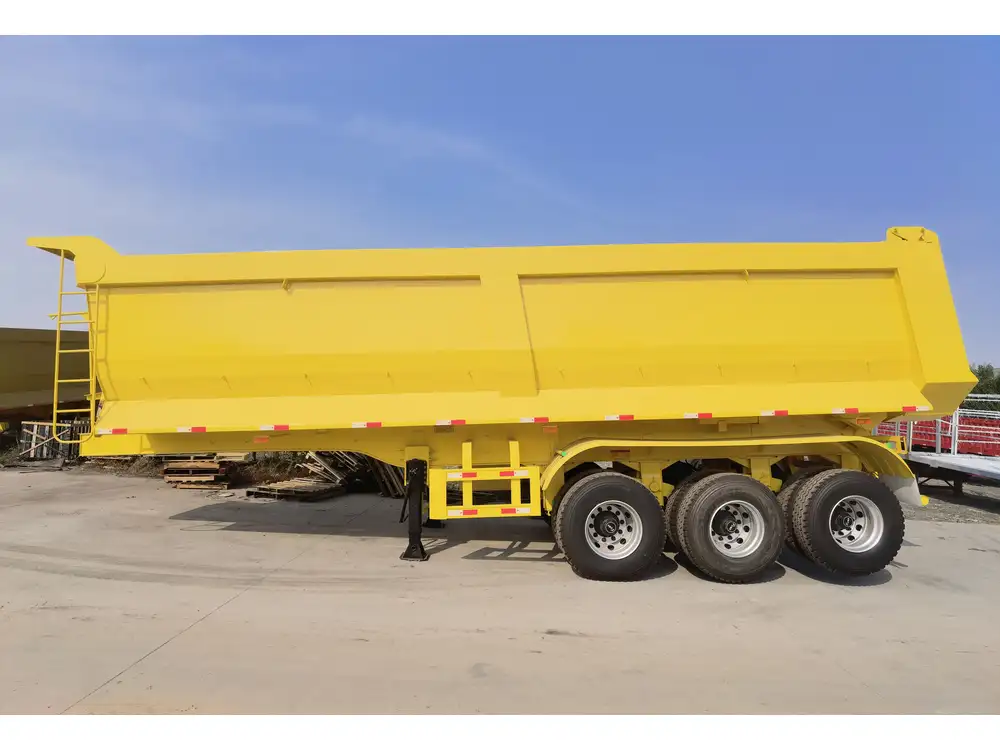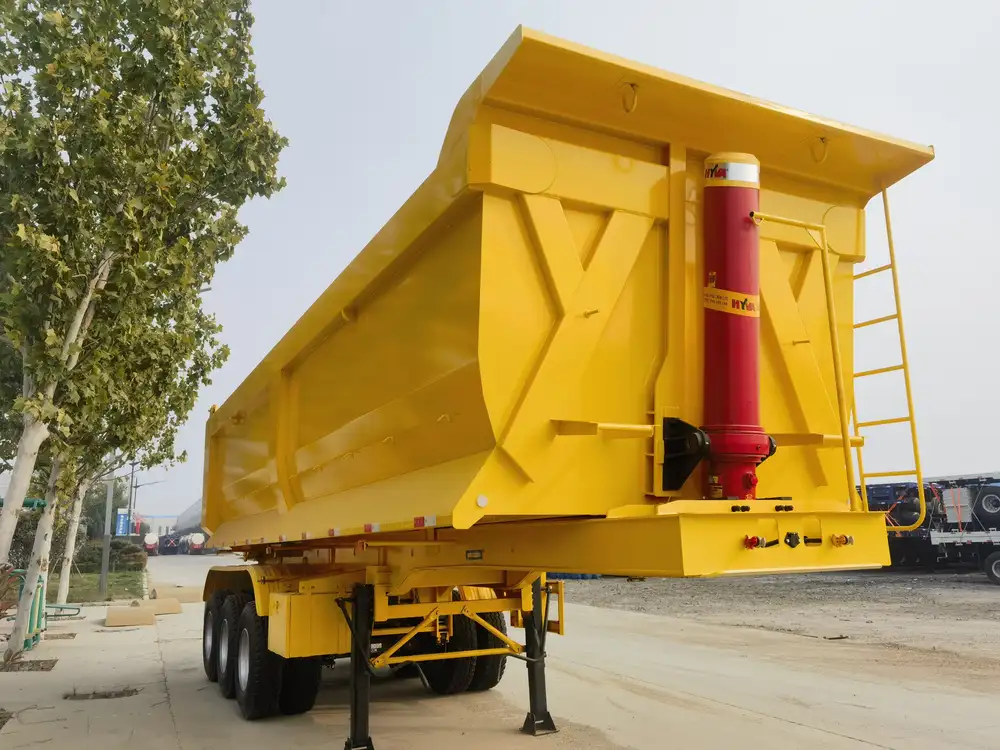When it comes to enhancing the efficiency and performance of dump trailers, understanding and adjusting hydraulic pressure is paramount. Whether you are a seasoned operator or a newcomer in the hauling industry, knowing how to manipulate hydraulic systems can make a significant difference in your operational flow and the lifespan of your equipment. Below is a detailed breakdown of the necessary steps, components, and considerations involved in turning up the hydraulic pressure on dump trailers.
Understanding Hydraulic Systems in Dump Trailers
What is Hydraulic Pressure?
Hydraulic pressure is the force exerted by hydraulic fluid within a system. In dump trailers, this pressure is utilized to lift the bed for unloading materials such as dirt, gravel, or debris. The effectiveness of this process relies heavily on the accuracy of the hydraulic pressure settings.

Key Components of a Dump Trailer’s Hydraulic System
- Hydraulic Pump: Converts mechanical energy into hydraulic energy by pressurizing the fluid.
- Hydraulic Tank: Stores the hydraulic fluid needed for operation and ensures appropriate levels.
- Hoses and Fittings: Facilitate the flow of hydraulic fluid between various components.
- Lift Cylinders: Create the lifting action to tilt the dump bed for material discharge.
- Relief Valve: Protects the system from excessive pressure by releasing fluid when preset pressure is exceeded.
Why Adjust Hydraulic Pressure?
Adjusting hydraulic pressure is crucial for ensuring optimum performance. Insufficient pressure may lead to a failure to lift the trailer bed completely, while excessive pressure can cause component wear or failure, resulting in safety hazards and costly repairs.
Step-by-Step Guide to Adjusting Hydraulic Pressure

Pre-Adjustment Preparation
Before manipulating hydraulic pressure, it’s essential to prepare adequately to ensure safety and effectiveness.
- Safety Gear: Always wear appropriate safety gear, including gloves and goggles.
- Level Ground: Position the dump trailer on a stable, level surface to prevent accidental movement or tipping.
- Check Fluid Levels: Inspect hydraulic fluid levels in the tank and refill if necessary to avoid cavitation.
- Visual Inspection: Conduct a thorough inspection of all components for any leaks, cracks, or damage.
Tools Required
- Wrench Set: For adjustments on hydraulic valves.
- Pressure Gauge: To measure hydraulic pressure accurately.
- Tire Pressure Gauge (Optional): To ensure trailer stability during adjustments.
- Hydraulic Fluid: Appropriate type and amount for topping up.
1. Locate the Relief Valve
The relief valve is typically found near the hydraulic pump. This valve is responsible for regulating the maximum pressure within the system. Here’s how to pinpoint it:
- Refer to the Manual: Locate the technical manual or schematic for your specific dump trailer model.
- Examine the Pump Assembly: Follow the lines leading from the pump until reaching the relief valve.

2. Attach the Pressure Gauge
To assess current pressure levels, affix a pressure gauge to the relief valve port. This allows you to monitor the changes as you adjust the setting.
3. Adjusting the Pressure Setting
The adjustment process varies slightly depending on the specific valve design, which could be either adjustable or preset.
For Adjustable Valves:
- Using a wrench, turn the adjustment screw clockwise to increase pressure. Typically, one full rotation will raise pressure by a few psi.
For Preset Valves:
- Consult the manufacturer’s specifications to determine the baseline pressure. If necessary, the valve must be replaced with an adjustable model for further tuning.
4. Test the System
After making adjustments, it’s crucial to conduct a systems check:
- Start the Truck: Engage the hydraulic system by activating the pump.
- Lift the Bed: Test the trailer’s lifting mechanism to ensure it operates smoothly and effectively.
- Monitor the Pressure Gauge: Observe the readings to ensure the pressure is within the desired range and that there are no sudden spikes.

5. Fine-Tuning the Adjustment
Hydraulic systems may require fine-tuning:
- Small Increments: Make minor adjustments (1/4 turns) until you achieve optimal performance.
- Repeat Testing: Repeat the lifting tests after each adjustment to assess effectiveness.
6. Document the Changes
Maintain a record of pressure settings and any adjustments made—for future reference and operational consistency.
Troubleshooting Common Hydraulic Pressure Issues

Insufficient Lifting Power
If the dump bed fails to lift appropriately even after adjustments:
- Check Fluid Levels: Ensure adequate hydraulic fluid.
- Inspect Components for Damage: Look for leaks or worn-out seals that could compromise pressure.
- Relief Valve Issues: Assess whether the relief valve might need replacement or further adjustments.
Excessive Pressure Problems
In cases where the system appears to be running at a higher than normal pressure:
- Monitor the Relief Valve: Ensure it’s functioning correctly and not sticking.
- Inspect the Pump: A malfunctioning pump can create abnormally high pressures.
Hydraulic Fluid Contamination
Contaminated fluid can lead to pressure inconsistencies. Regularly check and replace hydraulic fluid according to the manufacturer’s recommendations.

Dynamic Considerations for Enhanced Efficiency
Regular Maintenance
Routine maintenance is essential for ensuring your hydraulic system operates efficiently:
- Fluid Changes: Change hydraulic fluid periodically based on usage.
- Seal Integrity: Regularly inspect seals and fittings for any signs of wear and replace when necessary.
Utilizing Quality Components
Investing in high-quality hydraulic components can significantly improve performance and reduce maintenance demands.

Knowing Your Load Limits
Understanding the capacity of your dump trailer is crucial. Exceeding load limits can lead to excessive strain on the hydraulic system, causing premature failure.
Comparative Analysis of Hydraulic Systems
To optimize your dump trailer operations, it’s beneficial to compare various hydraulic systems:
| Feature | Standard System | Advanced System |
|---|---|---|
| Pressure Range | 1500–2500 psi | 2500–3500 psi |
| Adjustment Mechanism | Manual adjust | Automated control |
| Lifespan of Components | 5–7 years | 10+ years |
| Maintenance Frequency | Regular (6-12 months) | Extended (12-24 months) |
Conclusion
In conclusion, knowing how to adjust the hydraulic pressure on your dump trailer is not just a technical maneuver; it’s a vital skill that enhances your operational efficiency, safety, and equipment longevity. By adhering to the steps outlined above and maintaining your hydraulic system proactively, you equip yourself with the knowledge to tackle both routine and complex challenges effectively.
Moving forward, always remember that proper adjustment and maintenance can yield not only immediate performance gains but also extend the life of your dump trailer, allowing for more successful operations and a solid return on your investment. Equip yourself with the knowledge, tools, and practices necessary to maximize your hydraulic systems for optimal lifting power and functionality.



